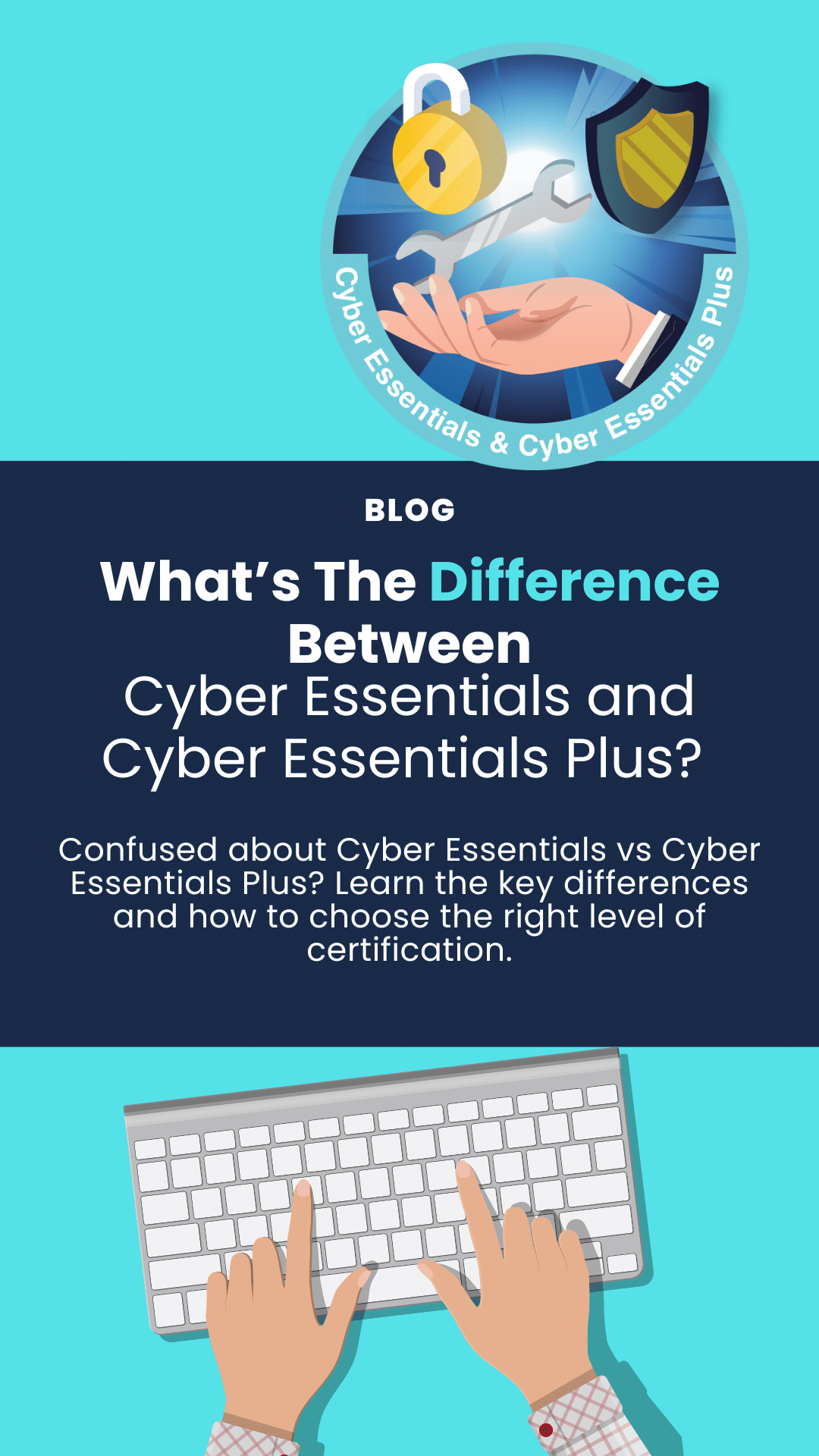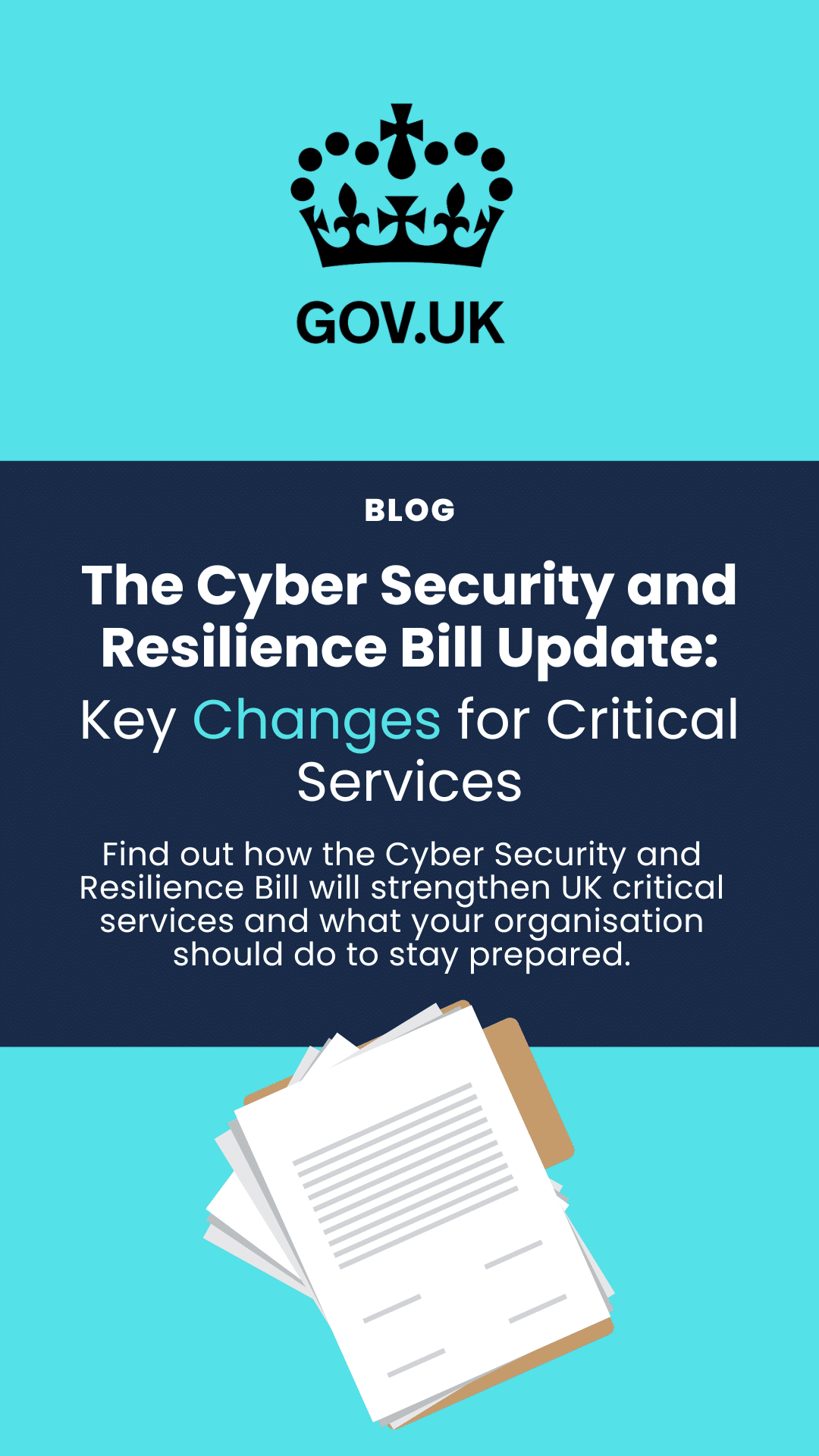You’ve probably seen the headlines: another global brand hit by ransomware, customer data leaked, operations down for days. But here’s the thing, those big names aren’t the only ones under attack.
Today’s attacks are far more calculated. Hackers quietly infiltrate systems, stay hidden for weeks, and wait for the perfect moment to cause maximum damage. Encryption is only part of the story — they also steal data, apply pressure through threats and extortion, and go after your reputation.
According to Sophos, 59% of organisations were hit by ransomware in the past year, with attackers commonly exploiting vulnerabilities and compromised credentials to break in.
In this blog, we’ll explore how ransomware tactics have evolved, why mid-sized organisations are firmly in the firing line, and what practical steps you can take to reduce risk, spot early warning signs, and recover quickly if you’re hit.
Explained: Modern Ransomware Attack For SME Businesses
Ransomware in 2025 isn’t loud or messy, not at first, anyway. Today’s attacks are quieter, smarter, and far more damaging than the basic encrypt-and-demand tactics of the past.
Hackers now take their time. They get in, blend in, and learn how your systems work before pulling the trigger.
One reason ransomware is spreading so quickly is the rise of (RaaS) Ransomware as a Service. This is where cybercriminals — or sometimes highly organised groups — sell ready-made ransomware kits to other attackers.
The package often includes everything: the malicious software, phishing templates, payment platforms, and even customer support. It means that even someone with limited technical skills can launch a full-scale ransomware attack — making the threat wider and harder to predict.
Common Entry Points
Attackers rarely break down the front door, they exploit weak spots like:
- Reused credentials that have already been exposed in other breaches
- Unpatched software with known vulnerabilities
Once they’re in, the real work begins.
The Silent Build-Up
Rather than strike immediately, attackers can sit inside your network for weeks or months. During this time, they:
- Escalate privileges
- Move laterally across systems
- Disable security tools
- Identify your most critical data
All of this happens quietly in the background — while your operations continue as normal.
The Endgame: Multi-Layered Extortion
When they’re ready, attackers go all in:
- Encrypting files to disrupt operations
- Stealing sensitive data as extra leverage
- Threatening to leak stolen info publicly
- Pressuring victims through multiple layers of extortion (encryption + data leak + reputational damage)
It’s not just about locking files — it’s about creating maximum pressure to make you pay.
Take the recent Marks & Spencer breach. Hackers gained access through a third-party supplier, not through M&S itself. Once inside, they caused massive disruption. Online orders were paused for over three weeks. Food systems were taken offline. Some stores even had empty shelves. M&S had to shut down parts of its IT infrastructure just to contain the attack. The financial impact? Analysts estimate over £40 million in lost sales per week.
It’s a perfect example of how ransomware tactics have shifted. From fast encryption to drawn-out, high-impact campaigns.
Why are SME’s a target for ransomware attacks?
You don’t need to be a household name to be targeted. In fact, cybercriminals are increasingly focusing on mid-sized organisations and most of the time, it’s happening under the radar.
Why? Because for attackers, SMEs are the path of least resistance. They often don’t have round-the-clock monitoring or dedicated Cyber Security teams. And when resources are tight, Cyber Security can be deprioritised — not due to negligence, but because of competing business pressures.
According to Vodafone’s Securing Success report, UK SMEs are losing over £3.4 billion every year due to cyber incidents.
Some of the key challenges SMEs face include:
- No 24/7 threat detection or SOC to spot unusual behaviour
- Relying on IT generalists rather than specialist security staff
- Lack of regular security training, with over a third offering none at all
- Infrequent testing of backups or incident response plans
- Remote workers using personal devices, widening the attack surface
These aren’t failures — they’re common realities for mid-sized organisations trying to balance growth, performance, and protection.
Spotting Trouble Before It Spreads: SME Cyber Security Solutions
The earlier you detect a ransomware attack, the less damage it can cause. But here’s the challenge: modern attackers are patient — and strategic.
They don’t rush in. They wait, observe, and move quietly across systems. They don’t rush in. Instead, they wait, observe, and move quietly through systems. Their goal is to maximise dwell time—the period between initial access and eventual detection.
And they’ve learnt how to time their moves for maximum impact. According to Sophos, 43% of ransomware attacks are detected on a Friday or Saturday. Why? Because attackers often strike late at night or over the weekend, when IT teams are thinner on the ground.
And with artificial intelligence now in the mix, things are only getting more complex. A recent report from GCHQ’s National Cyber Security Centre (NCSC) warns that AI is expected to increase the global ransomware threat over the next two years. Cybercriminals could use AI to speed up attacks, automate phishing, evade detection, and even mimic legitimate user behaviour. The NCSC is urging organisations to take action now — before the threat accelerates further.
What Are The Early Warning Signs?
There are often clues before a full-blown ransomware attack:
- Unusual login behaviour (especially outside normal hours or locations)
- Creation of new admin accounts
- Unexpected lateral movement between systems
- Spikes in file access or changes to sensitive directories
These aren’t always easy to spot manually, which is why technology and automation matter.
Tools That Can Help
To catch ransomware early, consider:
- EDR/XDR solutions: Endpoint and extended detection tools that flag suspicious behaviour in real-time
- Multi-Factor Authentication (MFA): Adds friction for attackers trying to use stolen credentials
Security alerts for things like:
- Privilege escalation
- Unauthorised software installs
- Connections to known malicious IPs
Early detection doesn’t just limit damage. It can stop an attack before encryption or data theft even begins.
Backups: The Unsung Hero of Ransomware Resilience
Ransomware attacks are designed to lock you out. But backups, when done properly, can help you take back control without panic or payment.
They’re not flashy. They don’t make headlines. But when ransomware strikes, backups can quietly save the day.
The National Cyber Security Centre sums it up perfectly:
“As a rule of thumb, you should back up anything that you value. That is, anything that would inconvenience you – for whatever reason – if you could no longer access it.”
It’s about having the confidence that your business can bounce back, even if systems go offline.
What Good Backups Look Like: Best Ransomware Protection For Business
The most effective backup strategies follow a few key principles:
- Immutable – backups that can’t be altered or encrypted
- Offline or isolated – stored separately from your main network
- Tested regularly – so you know they’ll work when needed
- Multiple versions – to avoid restoring compromised data
What to Do if You’re Hit — Without Panic
No matter how prepared you are, incidents still happen. The key is having a clear, calm plan and knowing what steps to take in those first critical moments.
Here’s what we currently recommend if you’re hit by ransomware:
Immediate Actions:
Isolate affected systems: Disconnect compromised devices from your network to stop the spread of malware.
Contact your cyber partner or incident response provider: Time matters. Bringing in expert support early can make all the difference.
Assess the impact: What systems are affected? Has data been accessed or encrypted? Who’s been impacted?
Restore from backups: If your backups are secure and up to date, now’s the time to use them.
Log the incident and review what happened: Keep detailed records of your response, then carry out a full review to strengthen defences for next time.
Know What to Expect
The National Cyber Security Centre (NCSC) has created a practical guide specifically for small businesses. Their Response & Recovery collection offers step-by-step advice on handling Cyber Security incidents like ransomware, from initial response to long-term improvement.
You can find it here
Paying the Ransom: What You Need to Know
When you’re hit by ransomware, it’s easy to feel like paying is your only option. But before you do, it’s important to know what you’re really signing up for — and what could go wrong.
No Guarantee of Data Recovery
Paying the ransom does not ensure that you’ll regain access to your data. In fact, 13% of organisations that pay the ransom recover all their data.
For instance, during the 2021 Colonial Pipeline attack, the company paid a ransom of $4.4 million. Although they received a decryption tool, it was so slow that the company had to rely on its own backups to restore operations.
Increased Risk of Repeat Attacks
Organisations that pay ransoms may become targets for future attacks. Cybercriminals often view these organisations as more likely to pay again.
A study by Cybereason found that 80% of organisations that paid a ransom experienced a second attack, with nearly half believing it was perpetrated by the same attackers.
Reparation Reduces Pressure
Having robust Cyber Security measures in place can mitigate the impact of ransomware attacks and reduce the pressure to pay a ransom. Key strategies include:
- Maintaining secure and tested backups to restore data without paying a ransom.
- Implementing multi-factor authentication (MFA) to prevent unauthorised access.
- Utilising Endpoint Detection and Response (EDR) solutions to detect and respond to threats
By investing in these preventative measures, organisations can enhance their resilience against ransomware attacks and make informed decisions when incidents occur.
Need help strengthening your ransomware defences?
Our Cyber Security experts are here to guide you through prevention, detection, and response — step by step. Call us on 0121 663 0055. Or email enquiries@equilibrium-security.co.uk.
Let’s make sure ransomware doesn’t catch you off guard.
Ready to achieve your security goals? We’re at your service.
expertise to help you shape and deliver your security strategy.
About the author




